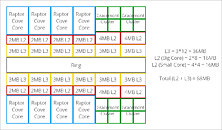
Intel Arrow Lake-S Die Visibly Larger Than Raptor Lake-S, Die-size Estimated
As a quick follow-up to last week's "Arrow Lake-S" de-lidding by Madness727, we now have a line-up of a de-lidded Core Ultra 9 285K "Arrow Lake-S" processor placed next to a Core i9-14900K "Raptor Lake-S," and the Core i9-12900K "Alder Lake-S." The tile-based "Arrow Lake-S" is visibly larger than the two, despite being made on more advanced foundry nodes. Both the 8P+16E "Raptor Lake-S" and 8P+8E "Alder Lake-S" chips are built on the Intel 7 node (10 nm Enhanced SuperFin). The "Raptor Lake-S" monolithic chip comes with a die-area of 257 mm². The "Alder Lake-S" is physically smaller, at 215 mm². What sets the two apart isn't just the two additional E-core clusters on "Raptor Lake-S," but also larger caches—2 MB of L2 per P-core, increased form 1.25 MB/core, and 4 MB per E-core cluster, increased from 2 MB/cluster.
Thanks to high quality die-shots of the "Arrow Lake-S" by Madness727, we have our first die-area estimations by A Hollow Knight on Twitter. The LGA1851 fiberglass substrate has the same dimensions as the LGA1700 substrate. This is to ensure the socket retains cooler compatibility. Using geometrical measurements, the base tile of the "Arrow Lake-S" is estimated to be 300.9 mm² in area. The base-tile is a more suitable guideline for "die-area," since Intel uses filler tiles to ensure gaps in the arrangement of logic tiles are filled, and the chip aligns with the base-tile below. The base tile, built on an Intel 22 nm foundry node, serves like a silicon interposer, facilitating high-density microscopic wiring between the various logic tiles stacked on top, and an interface to the fiberglass substrate below.
Thanks to high quality die-shots of the "Arrow Lake-S" by Madness727, we have our first die-area estimations by A Hollow Knight on Twitter. The LGA1851 fiberglass substrate has the same dimensions as the LGA1700 substrate. This is to ensure the socket retains cooler compatibility. Using geometrical measurements, the base tile of the "Arrow Lake-S" is estimated to be 300.9 mm² in area. The base-tile is a more suitable guideline for "die-area," since Intel uses filler tiles to ensure gaps in the arrangement of logic tiles are filled, and the chip aligns with the base-tile below. The base tile, built on an Intel 22 nm foundry node, serves like a silicon interposer, facilitating high-density microscopic wiring between the various logic tiles stacked on top, and an interface to the fiberglass substrate below.























































